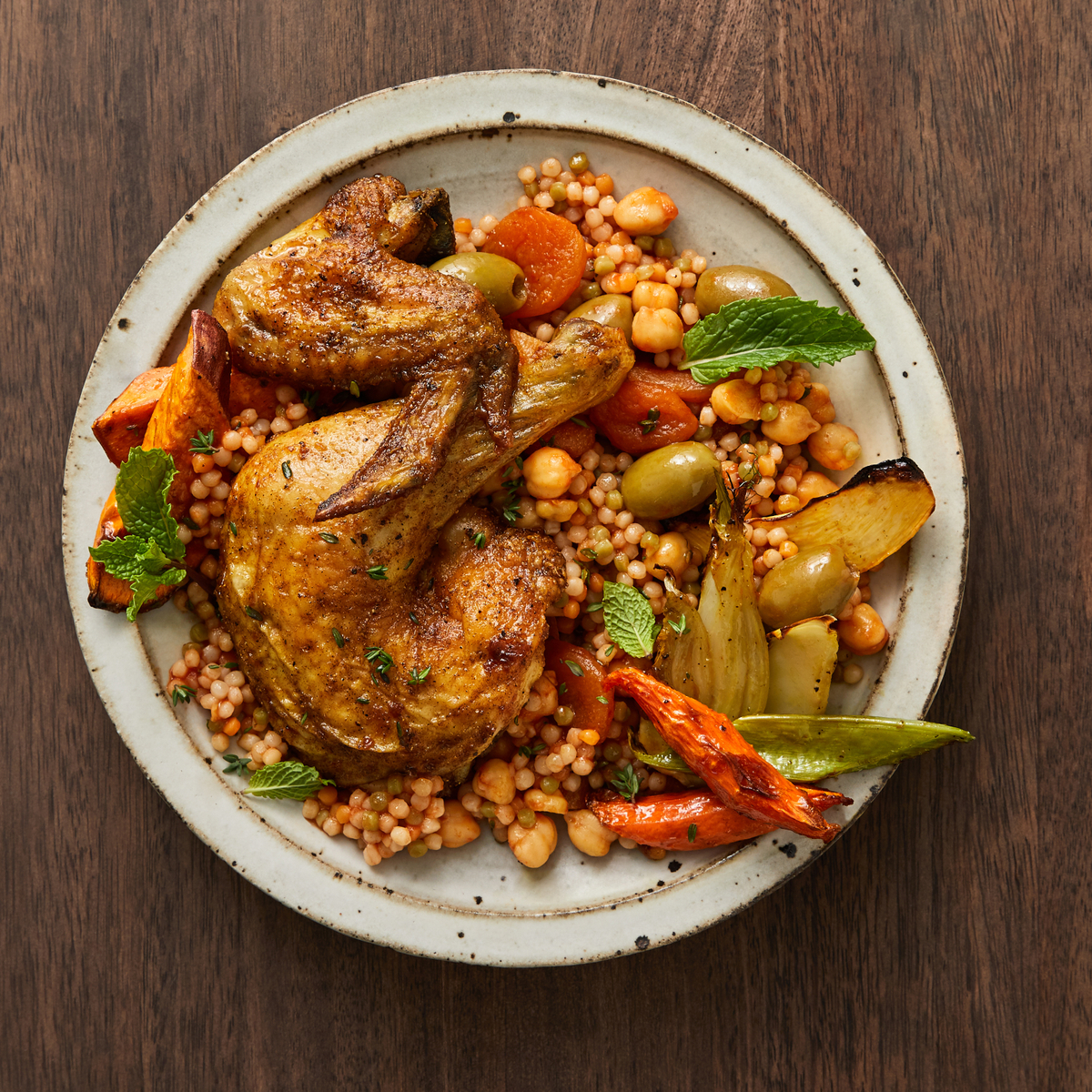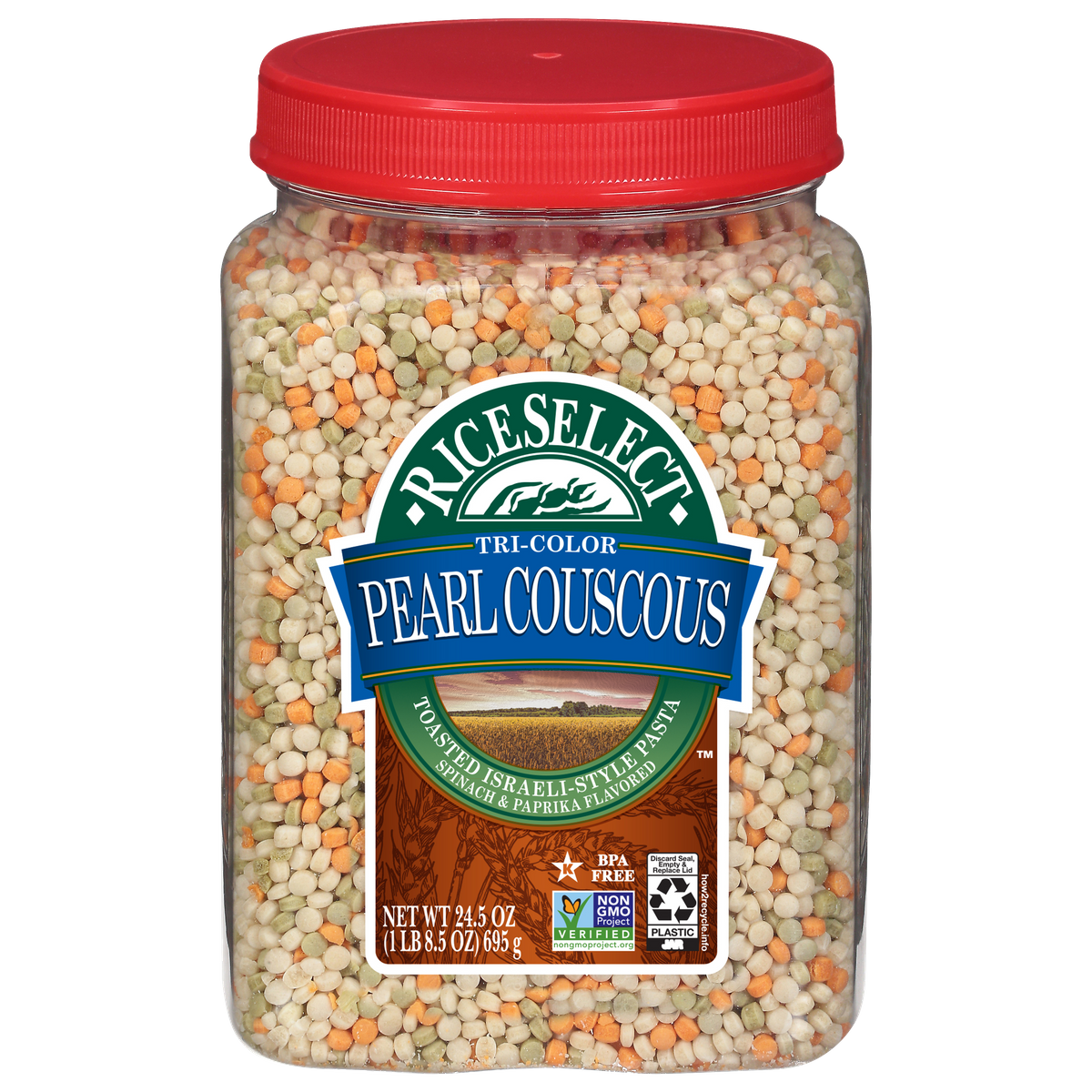Ingredients
- Broccolini & Feta:
Instructions
Preheat oven to 400°. In large bowl, combine sweet potatoes, fennel, rutabaga, celery, carrot, onion, garlic, 1 tbsp olive oil, and 1/2 tsp each salt and pepper. Transfer to roasting pan; set aside.
- Pat chicken dry with paper towel. Rub ras el hanout, and remaining olive oil, salt and pepper all over chicken, including under skin and inside cavity. Tie legs together with kitchen string. Lay chicken, breast side up, on top of vegetables.
- Bake in lower third of oven, occasionally basting with pan juices, for 80 to 90 minutes or until thermometer inserted into thickest part of the inner thigh registers 165°F. Transfer chicken to serving platter or cutting board and tent with foil for 10 to 15 minutes before slicing. Meanwhile, cook couscous according to package directions.
- While chicken is resting, skim fat from pan juices in roasting pan but leave roasted vegetables in pan. Heat over medium heat; stir in broth and tomato paste, scraping up any browned bits from bottom of pan. Bring to boil. Stir in chickpeas, olives, apricots, lemon juice and thyme; simmer for 8 to 10 minutes or until chickpeas are heated through and sauce is slightly thickened. Add couscous, tossing until well coated. Stir in mint.
- Remove string from chicken; Serve as desired: sliced, quartered, halved, etc. Serve with couscous and chickpea stew.
Recipe Suggestion:
To switch up this recipe try cooking Pearl Couscous, using whole wheat orzo pasta or traditional orzo.
What is a Rutabaga?
Rutabaga is a root vegetable from the same family as cabbage. Rutabagas are larger, rounder, and denser than turnips; they have flesh that is either white or yellow and skin that is either yellow or purple. They are most likely the offspring of a wild cabbage and a turnip hybrid.
They have a sweet, somewhat bitter flavor and crisp, juicy flesh. The prime growing season for rutabagas, a cool-weather crop, is from September to June. Try this Roasted Seven Vegetable Couscous Recipe for an aromatic vegetable dish.
Selecting and Storing
- Look for rutabagas with skin that is smooth and free of bruises. For their size, they ought to feel substantial.
- You can store them for up to a month in the refrigerator in a plastic bag.
- When bought at the grocery store, rutabagas are occasionally waxed to prevent moisture loss and lengthen shelf life.
- Early, small roots are more tender. Frost sweetens the flavor of mature roots.
Cooking Uses
- Peel rutabagas with a sturdy vegetable peeler to remove skin and wax. Wash under cold, running water; cut as necessary.
- Add rutabagas to soups, stews and casseroles, or puree with mashed potatoes.
- Eat rutabagas raw as a snack or grate into salads and slaws. Slice and bake like French fries.
- Rutabagas can be combined with carrots, potatoes, turnips and other root vegetables for a healthy stew. Try some out in our Roasted Seven Vegetable Couscous Recipe.
Cooking with Fennel
It has a fresh, aromatic anise flavor, and it can be eaten raw, sautéed, roasted, or even added to soups and sauces. If you’ve never worked with it before, this funky-looking veggie might be intimidating from the outside, but don’t let it scare you. Once you know how to approach it, it’s easy to work with.
The crunch of sliced fennel bulb, or fennel stalk means that it's often served raw - introducing a radish, or celery-like texture to salads or coleslaw.
When the bulb or stalks are sautéed, braised or roasted, the flavor begins to change and the sharpness turns to sweetness. Roast fennel stalks develop a caramel-like sweetness, and recipes where the bulb is pan-fried mean that the clean white flesh turns golden, and the flavors mellow and become more rounded.
Fennel bulbs can also be boiled or steamed. This curbs the bitterness, without introducing any sweet-caramel notes. Boiling or steaming fennel softens the bulb, meaning that it can be broken down into a purée.
Other Meal Inspiration
For something with more of a Mediterranean flavor, why not try a risotto using our Arborio rice? For more information you can check out our What is Arborio Rice? section on our website.


